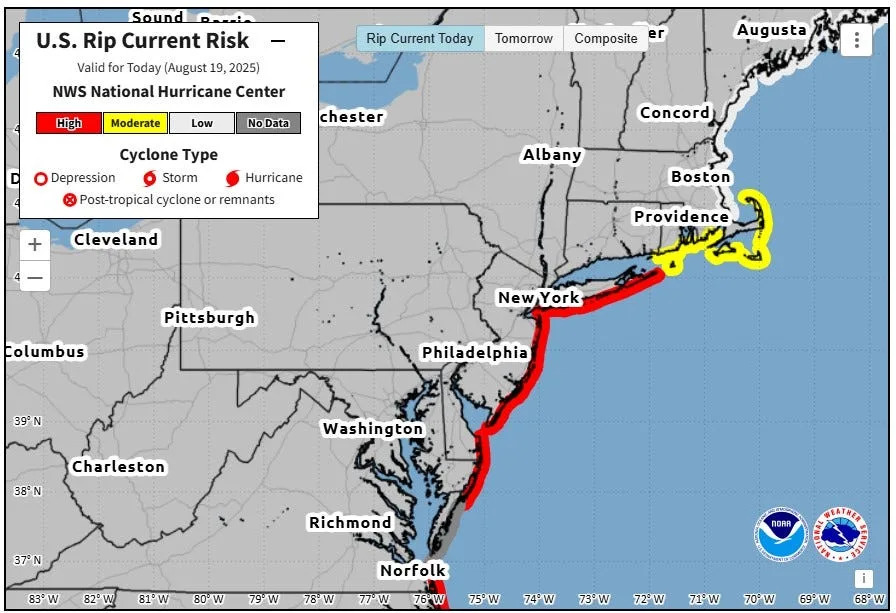The First State is beginning to feel the impact of Hurricane Erin as heavy waves and rip currents begin to move into the Delaware beaches.
Delaware's Atlantic coastline is under a high risk for rip currents Aug. 19 and 20.

Hurricane Erin tracker: Storm weakens to category 3. When will it hit Delaware
Where is Hurricane Erin going to hit?
While the storm is not expected to make landfall in Delaware, dangerous rip currents and breaking waves are forecast from East Central Florida to Canada's Atlantic Coast beginning Aug. 19, Hurricane Center Director Michael Brennan has warned.
Brennan is pleading with U.S. residents to take Erin's potential coastal impacts seriously, even though the nation will be spared a direct landfall. Offshore wave heights could exceed 20 to 30 feet.
High tides are also expected to bring higher-than-normal water levels further southward along the coast, the weather service has warned.
"It's not going to be a safe environment to be in the ocean," Brennan said, adding that even when the weather may be pleasant on shore, dangerous and possibly life-threatening rip currents could be lurking in the water.
Along the Delaware beaches and Jersey Shore, seas will build from 8 to 12 feet with beach erosion and coastal flooding expected, according to the National Weather Service
The rip current risk will be high through at least Aug. 21, the weather service said.
Are Delaware beaches closed?
Dewey Beach closed ocean access around 12:30 p.m. Aug. 18 "due to rip currents and dangerous waves," the town's website says. In Rehoboth Beach, officials prohibited swimming around the same time. You can still walk on both beaches.
In addition, drive-on paths are closed in Delaware Seashore and Fenwick Island State Parks, Delaware State Parks announced in a social media post, due to high surf and dangerous conditions.
What is a rip current?
According to NOAA, rip currents are channeled currents of water that flow away from the shore out past the line of breaking waves. They form from water piling up between the breaking waves and the beach. As the water returns from the shore, it forms a narrow stream of water that moves quickly out to sea.
What to do in a rip current
According to the United States Lifesaving Association, swimmers should do the following:
Relax, rip currents don't pull you under.
Don’t swim against the current.
You may be able to escape by swimming out of the current in a direction following the shoreline, or toward breaking waves, then at an angle toward the beach.
You may be able to escape by floating or treading water if the current circulates back toward shore.
If you feel you will be unable to reach shore, draw attention to yourself. If you need help, yell and wave for assistance.
Dinah Voyles Pulver and John Bacon contributed to this story.
This article originally appeared on Delaware News Journal: Hurricane Erin 2025: Rip current risk at Delaware beaches








Comments